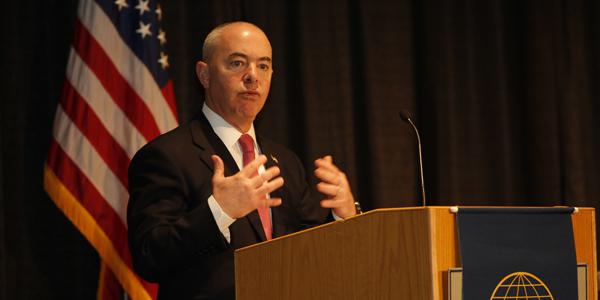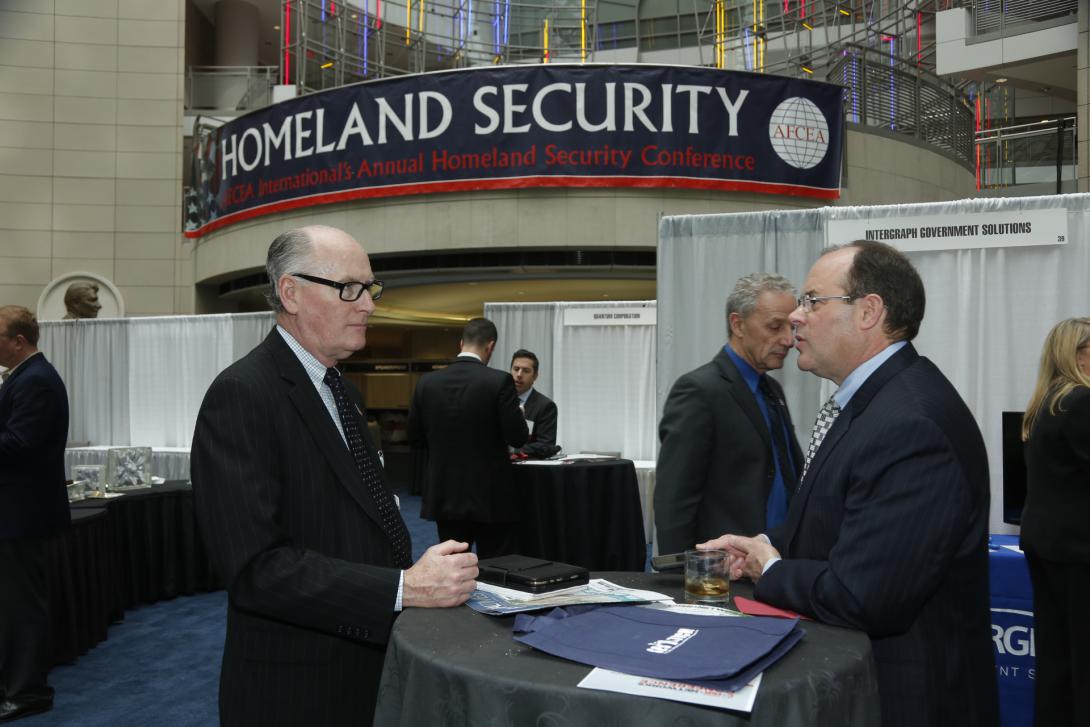Perils to Homeland Security Mirror Threats of the World Stage
Cybersecurity tops the list as a critical homeland security priority for U.S. officials, followed closely by perils that pose national security threats in varying domains such as aviation, border security and maritime.
As nations teeter on varying threatening precipices of instability around the world posed by terrorist aggressions in the Middle East, tensions on the Korean peninsula and continuing piracy issues off of the Eastern shores of African nations, the list of threats in the United States is no shorter or less worrisome.
Cybersecurity tops the list as a critical homeland security priority for U.S. officials, followed closely by perils that pose national security threats in varying domains such as aviation, border security and maritime, Alejandro Mayorkas, deputy secretary of the Department of Homeland Security, said in March at the annual AFCEA International Homeland Security Conference.
“One thing we need to do better to really advance unity of effort with industry is … openness and transparency,” Mayorkas told the assembled attendees in Washington, D.C., for the two-day conference and expo.
Cybersecurity is a chief concern of top level government officials, including President Barack Obama, who this year issued an executive order promoting private sector cybersecurity information sharing in an effort to place high-level focus on the need to combat criminal and terrorist cyber activity.
Knowing the cybersecurity threat might be half the battle toward mitigating problems, but the leading trend toward increased information sharing, particularly between industry and the federal government, is not the end all be all, according to one security expert who served as a conference panelist. Too much focus on information sharing alone ignores a gaping problem, said Bob Dix, vice president of global government affairs and public policy at Juniper Networks. “As a nation and global community, we need to change the equations by making it more difficult and more costly for the bad guys.”
The government, with much help from private industry, is in pursuit of technologies to mitigate attacks. “We want to move from Flintstones to the Jetsons, move from a prehistoric architecture to the visionary,” Mayorkas said. “Our dollars are just as capable of attaining advances as dollars in the private sector.”
Industry outspends the government by a ratio of 2-to-1 on research and development projects; a good thing for economic stimulation and growth, but the lack of federal dollars toward the effort stymies some advancements. “Innovation occurs at the intersection of creativity and courage,” stated Doug Rand, assistant director of entrepreneurship in the White House’s Office of Science and Technology Policy.
Some innovation was spearheaded by necessity brought on by the booming popularity of social media, and adversaries around the world capitalizing on the ease of use and the ensnared audience, experts said. For example, law enforcement has moved “well into the third paradigm shift” of gathering intelligence from social media, according to Michael Steinbach, assistant director of the FBI’s Counterterrorism Division. The one-time nascent tactic of trolling public sites was complicated by immature technology, inexperienced analysts and the fact that most social media companies fail to comply with the Communications Assistance for Law Enforcement Act passed by Congress to facilitate wiretapping of U.S. domestic telephone and Internet traffic.
As terrorists increased their use of widely popular social media platforms as a successful recruiting tool—evidenced by media reports of more and more young people lured from their homes to places such as Syria to fight alongside terrorist groups—law enforcement had to quickly turn what’s trendy into an intelligence-gathering asset.
Conference attendees also heard from experts addressing issues ranging from tips for small businesses seeking to make inroads for government contracts to biosurveillance, emergency management, the emerging threats posed by lax security surrounding the growing Internet of Things domain and progress on a dedicated broadband network designated for first responders.
It would not have been a gathering of government officials and industry representatives without discussion of the archaic government acquisition process that is one serious inhibitor to progress and rapid fielding of technology.
The process takes too long and slow payments, along with slow acquisition decisions, make progress difficult for companies who want to capture government business but are leery of depending on it. For small businesses looking to court government contracts, Debbie Deininger, president and CEO of Synkera Technologies Incorporated, suggested they develop capabilities to fit the mission needs; for agencies wanting to entice small businesses, she suggested letting “the creativity of the contractor come out. It will lead to more diverse selection.”






Comments